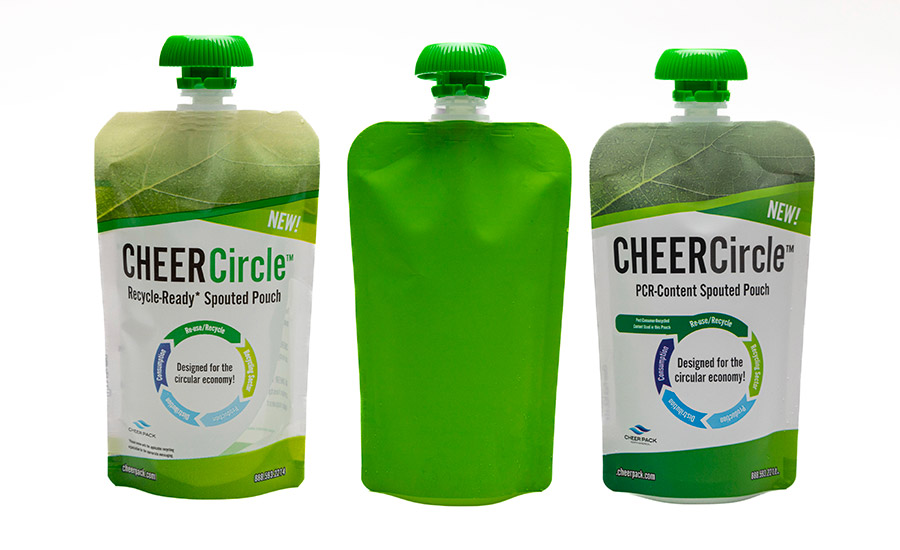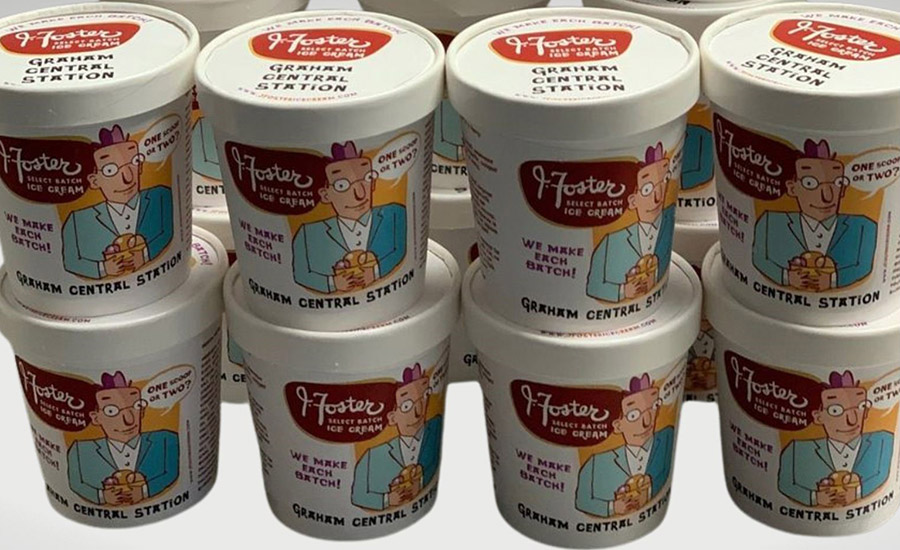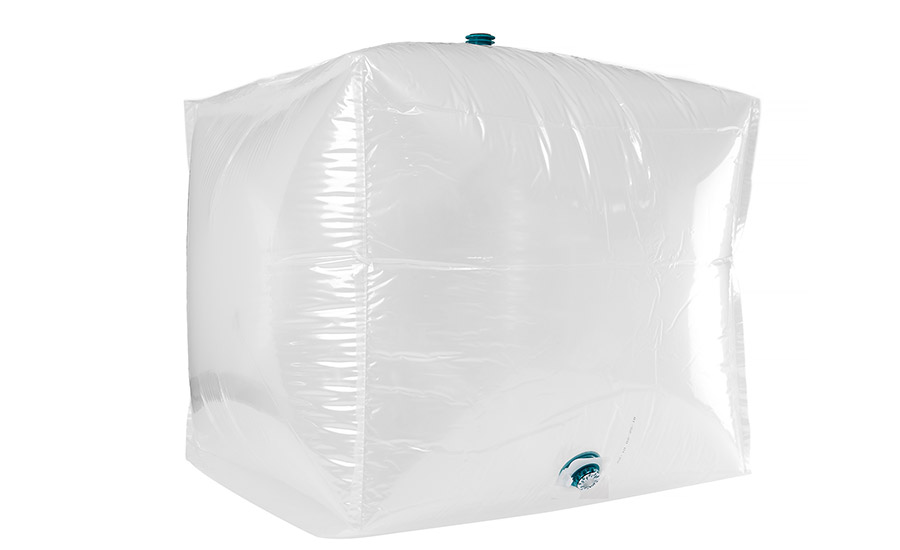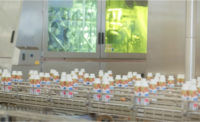The need to keep dairy products safe and fresh while distinguishing offerings is resulting in a greater processor demand for highly functional packaging designs. While suppliers are responding by offering a wider array of options, operators also face the task of leveraging the most appropriate options for their unique situations.
The global dairy packaging market is forecast to increase from $29.8 billion in 2022 to $45.6 billion by 2030, with a 4.5% compound annual growth rate (CAG), reports Contrive Datum Insights Pvt. Ltd., a Farmington, Conn.-based research firm.
Contrive Datum Insights attributes the growth to rising consumer demand for dairy products; increasing disposable income; and the greater availability of packaged dairy products through various retailing channels due to population growth.
“Dairy products must be packaged properly and effectively because they are perishable in order to facilitate storage and transportation,” Contrive Datum Insights states. “Due to its convenience, compact packaging is projected to see increased demand, which will fuel the industry even more.”
Interest in flexible packaging will be particularly strong because of the logistic benefits, the firm states, adding that North America is the leading dairy packaging market “aided by massive milk production and high consumption of cheese, yogurt and flavored milk products.”
“Recent trends in the global dairy market show that producers are trying to achieve product differentiation through packaging,” reports Future Market Insights Inc., a Newark, Del.-based market research firm. “Eye catching, chic design, and aseptic features are common in present-day dairy products packaging formats.”
Fierce competition is leading end users to invest in creative and innovative dairy product packaging solutions, Future Market Insights adds. “Increasing consumption of dairy products owing to the rising awareness regarding a healthy lifestyle is further expected to fuel market demand for packaging,” the firm notes.
Study the circumstances
Such factors as the size of an operation; output goals; compatibility between machines; ease of production reporting; and future output needs are key elements for processors to consider when selecting packaging systems, says Ron Giordano, executive advisor at Blaige & Co., a Chicago-based advisor to dairy, food, and related processors and contract manufacturers, and the former president of H.S. Crocker Co. Inc., a manufacturer of die cut lids for the food industry.
In addition, processors should decide if it will be a completely new packaging line or if components already in use will remain, says Murray Bain, vice president of marketing for Stanpac Inc., a Smithville, Ont.-based packaging equipment supplier. “Space requirements are always top of mind for dairy operations, so the portability of moving equipment in and out may be of special consideration as well,” he notes.
Ease of wash-down in a production environment; equipment reliability, durability, up time; and the availability of spare parts and service also are important variables, Bain states, along with the ability to quickly change equipment to run different products on a line.

Because most dairy products are highly perishable, shelf stability and food safety are further areas for processors to explore when selecting packaging, says Leslie Gurland, vice president of sales and marketing for Premium Labels & Packaging Solutions, a Fairfield, N.J.-based provider of flexible packaging, shrink sleeves and labels.
This can include considering such options for milk as wax or plastic-coated paper board cartons; jugs made from plastic or glass to help keep products fresher longer; and aseptic boxes for ultra-pasteurized milk that retailers can store at room temperature on store shelves, she notes.
“Once the format has been established, processors should look to the function and quality of the packaging, consistent print quality, ease of application, technical support, and price competitiveness,” Gurland says.
A world of difference
Elements that separate superior packaging equipment from average systems include machine quality; high-speed capabilities; the need for minimal operator involvement; the integration of artificial intelligence to reduce the need for constant supervision; and having secure but not easily adjustable settings to reduce discrepancies from one shift to the next, Giordano notes.
In deciding among technologies, processors should seek referrals from five or six users rather than relying solely on manufacturers’ performance statistics, Giordano states. Indeed, speaking with industry colleagues who are using specific equipment can enable processors to learn first-hand about the pros and cons of potential packaging systems, Bain suggests.
Operators also can “save a lot of frustration down the road when something gets off track” by reviewing a supplier’s written proposal with guarantees of such factors as run speed and uptime, while maintaining documents that list the deliverables, he notes.
Other decision metrics include warranties and the availability of replacement parts, as it is “better to spend money up front than pay later for repairs and parts,” Giordano says.

Involving maintenance personnel and production supervisors in the choice of new equipment also is important “so they can plan to meet goals and easily integrate the equipment into the production chain,” he states, adding that choosing higher-capacity equipment to accommodate future growth is crucial too.
“Superior packaging equipment delivers consistent filling and quality controls,” says Al Madonna, vice president of marketing for Cheer Pack North America, a Bridgewater, Mass.-based supplier of spouted flexible pouch and cap packaging. “Sourcing from global filling equipment leaders with broad experience in the dairy industry is a key factor.”
Suppliers with state-of-the art innovation centers also can better help processors “fast track and optimize the launch success," Madonna says.
Do not go it alone
Operators seeking superior package printing, meanwhile, should work closely with suppliers that have the technical knowledge for a wide range of options, Gurland states. She notes, for instance, that some printers only work with pressure sensitive labels while others support a full range of packaging options, including shrink sleeves and flexible packaging.
Because “savvy packaging suppliers know that innovation gives them a competitive edge,” Gurland says processors should ask potential vendors about their capabilities in such areas as smart labels; the latest label printing techniques; and sustainable materials.

“It’s also essential to have direct conversations to ensure the suppliers are well-stocked with the brand’s materials,” she notes. “If you foresee a potential issue, it’s important to know that the supplier has a plan B that won’t impact the packaging integrity and ship date.”
“Leveraging the expertise and services offered by their packaging suppliers can enable processors to obtain the most reliable information and advice for making the best purchasing decisions,” adds Hein Haerinck, director of sales, EMEA, for CDF Corp., a Plymouth, Mass.-based packaging vendor.
Such decisions include selecting high-quality packaging film, which is a key element for enhancing processing operations, he states. “Average systems often lure customers with lower costs,” Haerinck says. “However, that can occasionally lead to quality problems and even leaks during transportation due to their inferior construction and components.”
Comparison shop
Assessing hourly output differences between current and new machines, especially in non-automated processes, can help processors determine if it is time to replace present packaging technologies with more effective and efficient equipment, Blaige & Co.’s Giordano states.
Additional replacement indicators are the wear and tear on components; the compatibility of packaging technologies with the latest software upgrades; and the ability to regularly incorporate both software and mechanical updates, he says.
“Understanding the necessity to stay competitive while recognizing the role of advanced technologies in price control, capacity, and speed,” is important as well, Giordano states. Operators also should acknowledge the accelerating technology changes and consider the possibility of transitioning from 10-year to three-year technology cycles to maintain consistent output, he notes.
Indeed, Giordano says it is vital to explore the feasibility of more frequently trading in older equipment for newer versions while also considering lease options for easier upgrades. “There is a need for long-term sustainability and recognizing the limitations from quick fixes and temporary solutions,” Giordano notes.
Keeping records of run time, downtime, production efficiencies, cost of maintenance, and product waste also will enable processors to pinpoint trends that can indicate the need for packaging equipment enhancements, Stanpac’s Bain says. “The availability of parts and service, perhaps due to newer models and advancements in technology, will be a further indicator if it is time to consider an alternative or an upgrade,” he states.
Among the more recent improvements to packaging systems is the use of advanced computer software and robotics throughout the packaging process; and greater automation in front-end production stages in addition to the technologies in use for tail-end boxing, Giordano says.
“Strategic staff positioning along the production line in combination with robotics is minimizing downtime and enhancing operational efficiencies,” he notes, adding that the implementation of consistent heat settings is eliminating packaging variations between work shifts.
Other developments include the greater use of biodegradable and sustainable packaging, and particularly aseptic packaging, in the global dairy products packaging market, Future Market Insights states. Aseptic packaging formats include liquid cartons, pouches, cups, bottles, jars, metal and plastic, and composite cans.
Flexible packaging, meanwhile, is accounting for a greater share of dairy packaging revenues, Future Market Insights reports. “Though rigid packaging has its advantages like high resistance to oxygen, moisture, and light, flexible packaging is preferred due to lightweight and compact packaging, the firm concludes. “Out of the two, flexible packaging is subject to maximum innovations.”


